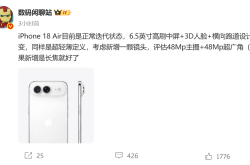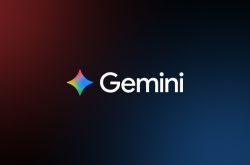Experiencing Luo Yonghao's AI Application: An AI Assistant that Blends Everything Together?
![]() 01/07 2025
01/07 2025
![]() 658
658
The rumored "AI software project" by Luo Yonghao has finally launched. Just this past weekend, Luo Yonghao's "final entrepreneurial venture" transitioned from AR to AI, unveiling its first product – the J1 Assistant AI Assistant, now available in Beta version on Android. The official website indicates that the initial supported models are limited to the latest three generations of Samsung Galaxy and Google Pixel, and the app only supports English without Chinese, proving that the launch of J1 Assistant is targeted at overseas rather than domestic markets.
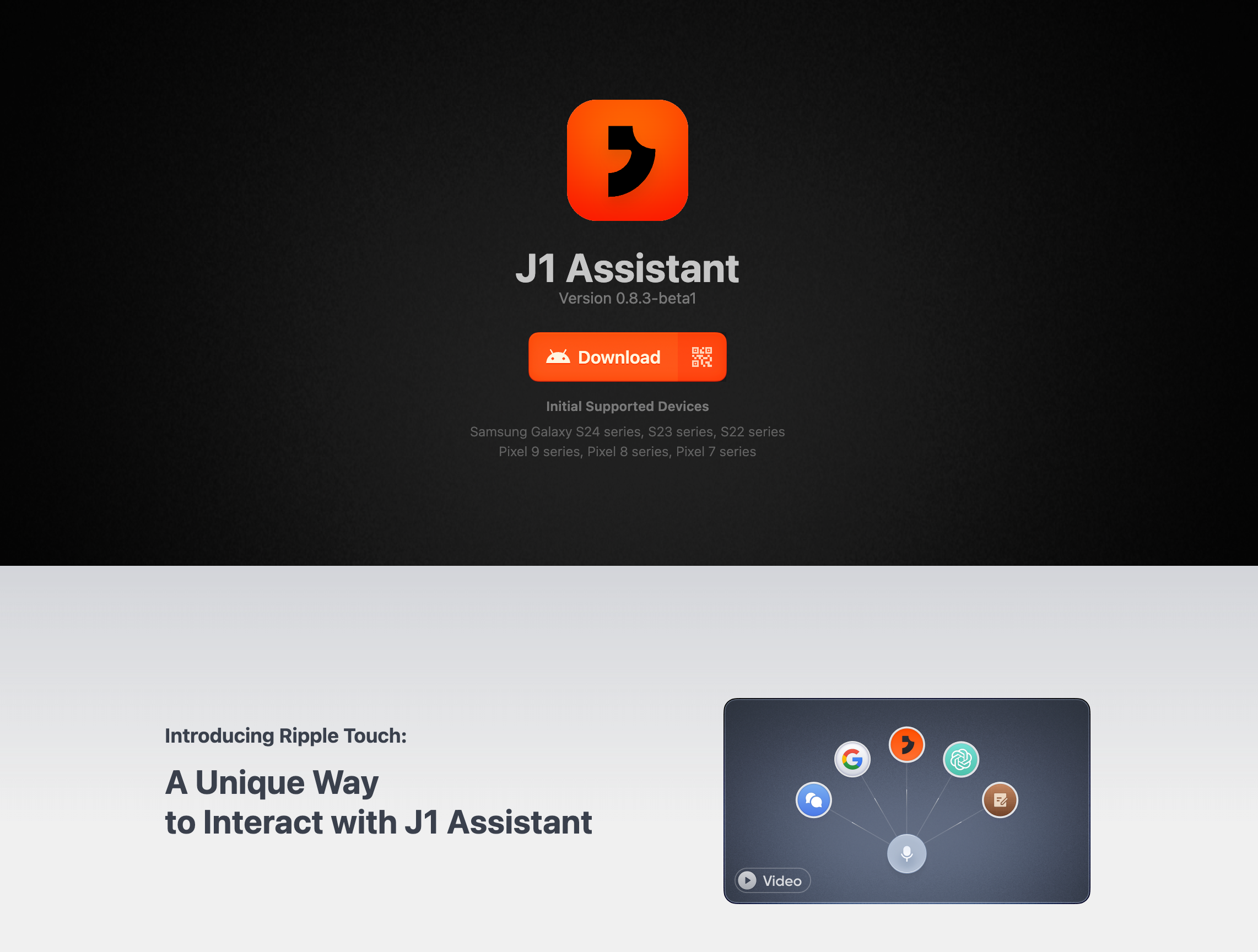
Photo/Matter
Meanwhile, another AI hardware product from Luo Yonghao, JARVIS ONE, is also on the horizon, with the official website already announcing its upcoming release.
According to the official website, it is a card-shaped AI native hardware that activates voice commands by touching and holding the fingerprint recognition area. The device is equipped with fingerprint recognition, WiFi, and Bluetooth modules. Theoretically, it should participate in this year's CES 2025 Consumer Electronics Show, where the LeiTech CES reporting team will also provide on-site coverage.
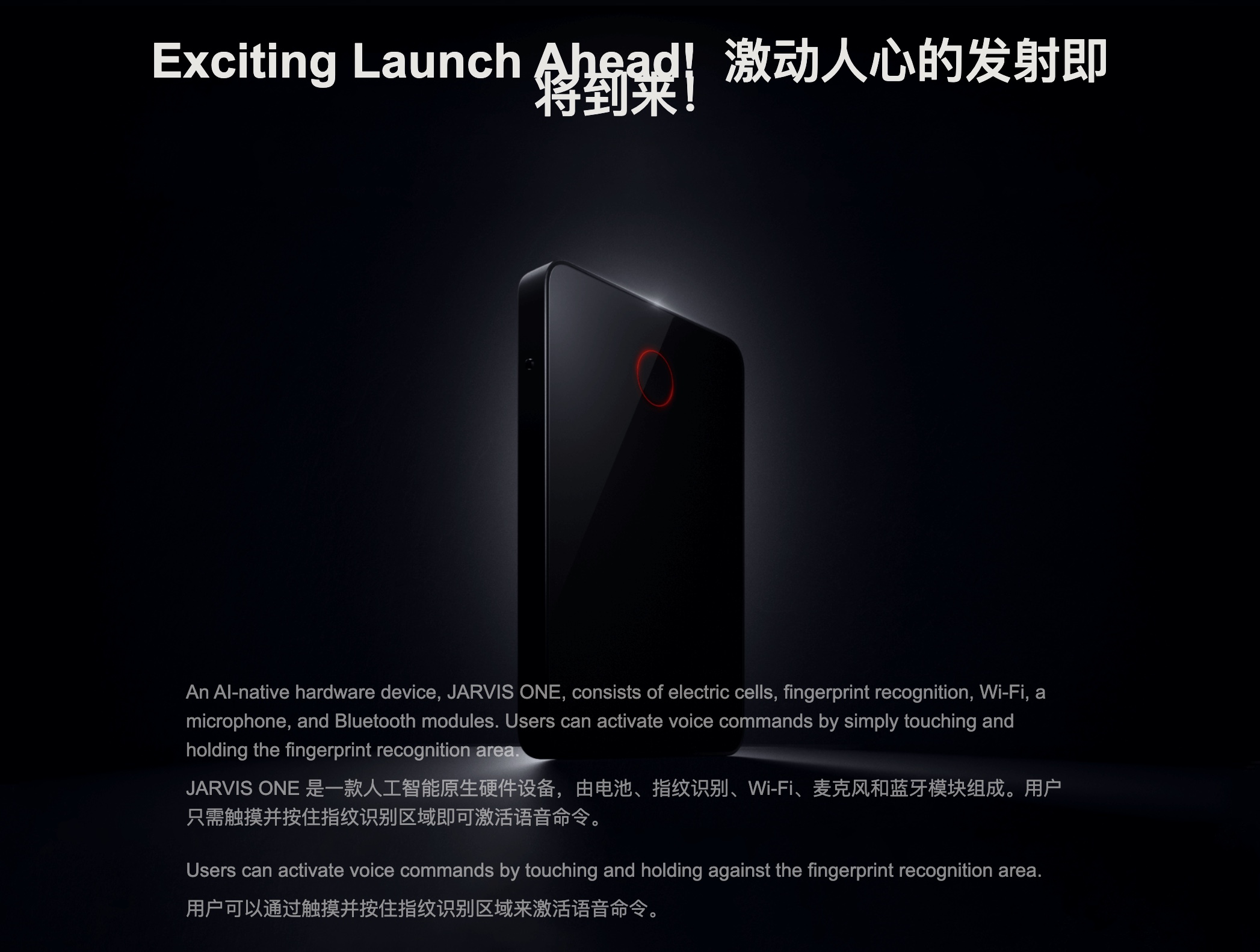
Photo/Matter
However, judging from previous leaks and currently released products, the main focus of Luo Yonghao's latest venture is still the software-based J1 Assistant. But if I had to describe J1 Assistant in one sentence, it would be another AI assistant app. Yet, over the past two years, we have become accustomed to AI assistants/helpers based on large models. So, what makes J1 Assistant different?
(Editor's note: The following functions and experiences are based on version v0.8.3-beta1.)
To-do List + Smartisan Notes + AI Chat + Bullet Messenger + Card Dealer
As the saying goes, people judge a book by its cover. J1 Assistant's UI design clearly exudes a "Smartisan flavor," with many icons even reusing materials from the past SmartisanOS. The style remains materialistic, which will be familiar to those who have used Smartisan OS.
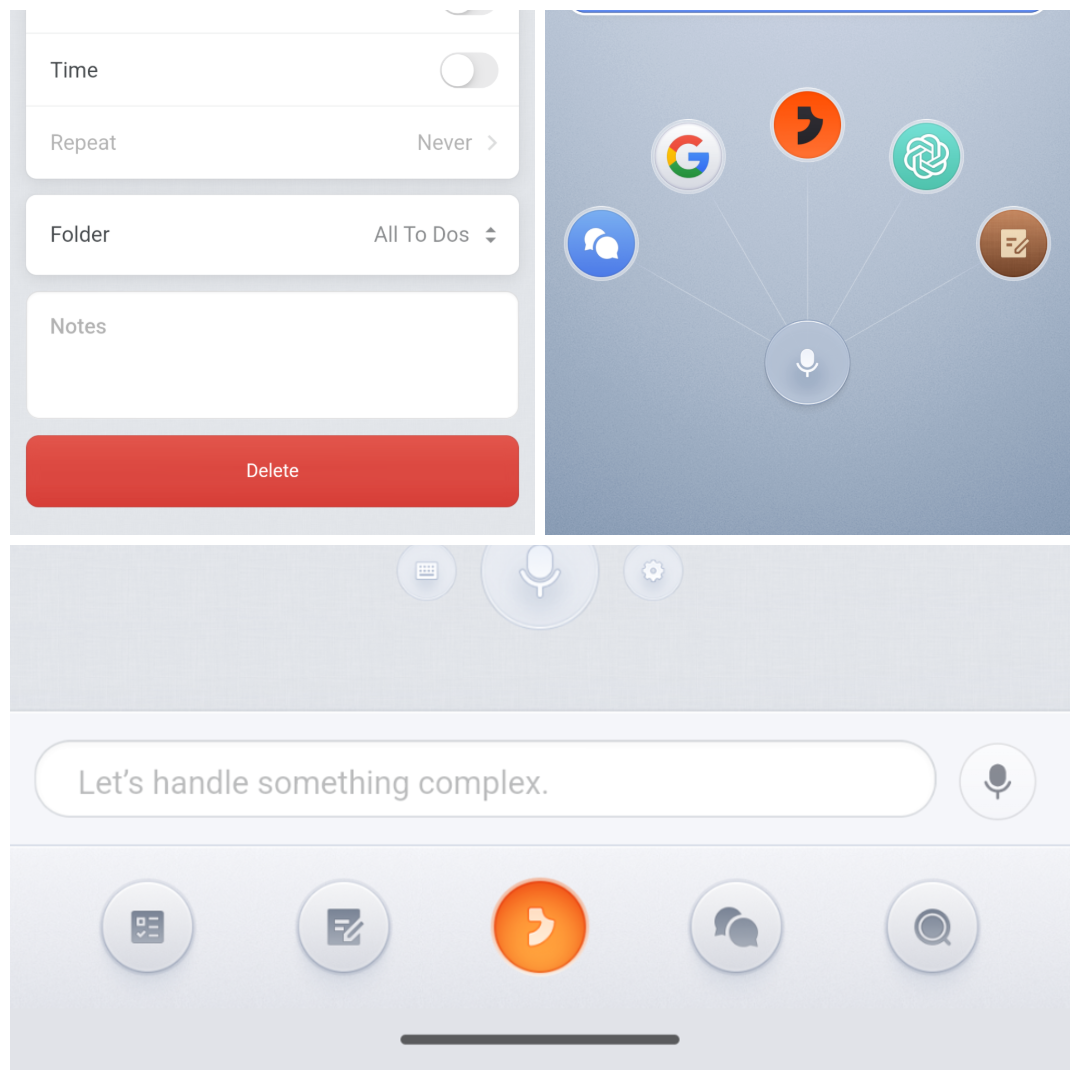
"Smartisan flavor" design, Photo/LeiTech
Luo Yonghao even incorporated Smartisan Notes into J1 Assistant.
In fact, the user experience of J1 Assistant revolves around five core functions, directly corresponding to the five tabs at the bottom: To Do (to-do list), Notes, AI Assistant, J1 Message (chat), and Search.
Among them, Notes basically corresponds to Smartisan Notes, with a very similar overall design, especially the writing interface, which is almost identical. The difference lies in the fact that J1 Assistant's Notes are still quite rudimentary in all aspects, lacking many layout tools and the most famous image sharing templates of Smartisan Notes.
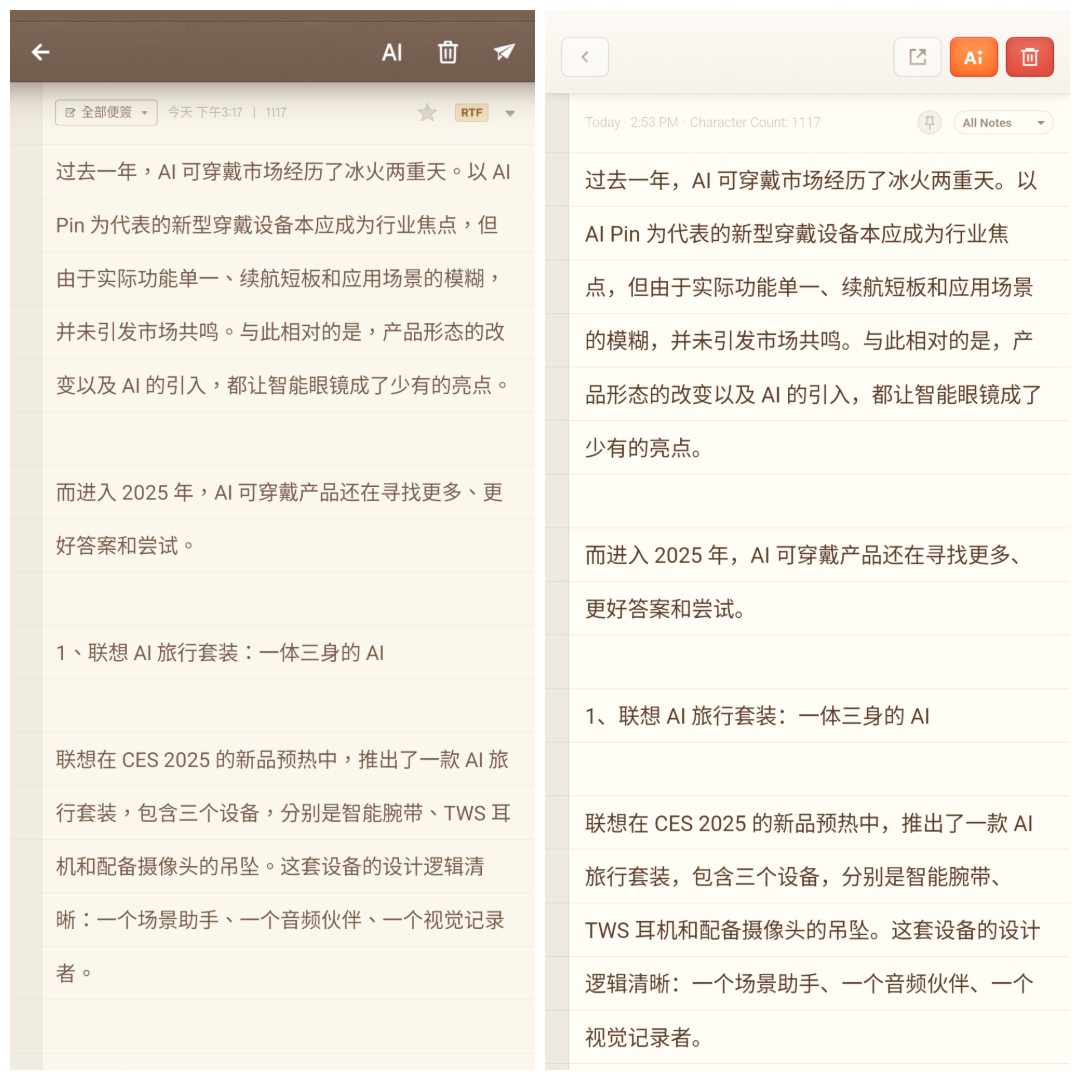
Left: Smartisan Notes; Right: J1 Assistant's Notes, Photo/LeiTech
AI functionality is also available, but the adjustments that can be made in the current Beta version are quite limited, even simpler than the "Writing Tools" in iOS 18. Similar to Notes, J1 Assistant also includes a "To Do" function, which is also quite rudimentary compared to other to-do list apps on the market.
So, what value do Notes and To Do bring to J1 Assistant? This requires analyzing the AI assistant. Let's first look at J1 Assistant's other two relatively independent core functions – J1 Message and Search.
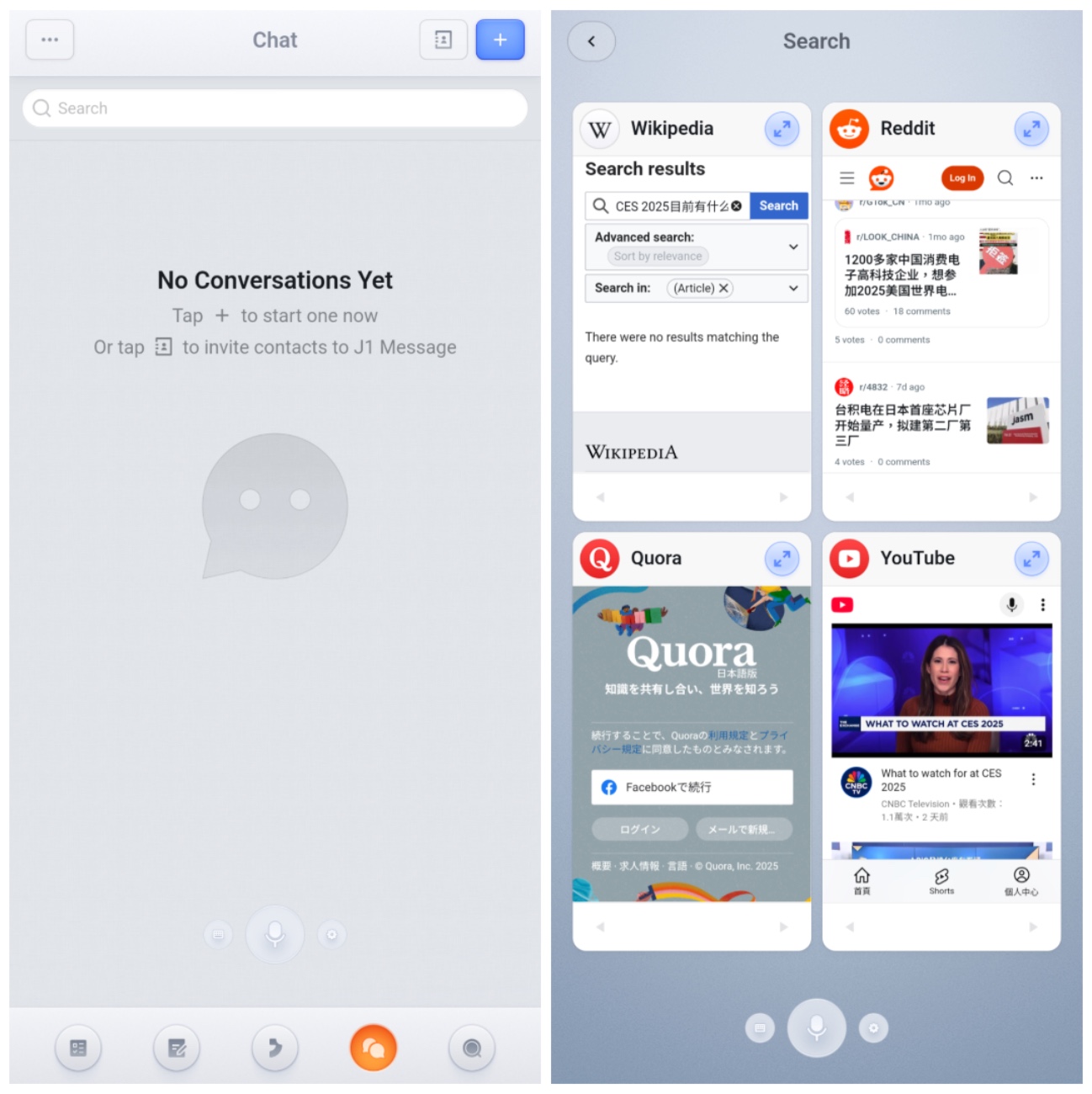
Photo/LeiTech
J1 Message is very similar to the now-defunct "Bullet Messenger" in both interface design and mechanism, also requiring others to register and join to chat. Considering the fragmented instant messaging market today, it is almost certain that for a long time, the J1 Message function will be ineffective for J1 Assistant users.
Search, on the other hand, seems to inherit the "Card Dealer" function of TNT, allowing up to 4 sources (1 group) to be searched at once, with support for up to 5 groups of custom sources. Among the total of 19 selectable sources, in addition to general search engines like Google, Bing, Perplexity, and e-commerce search engines like Amazon, Temu, Shein, there are also YouTube, Reddit, and ChatGPT.
Also inherited from "Smartisan's legacy" is the interactive design. When holding down the voice icon to speak, in addition to the voice waveform preview box, J1 Assistant also displays 5 search groups simultaneously, allowing the "voice" to be swiped to the desired search group after speaking.
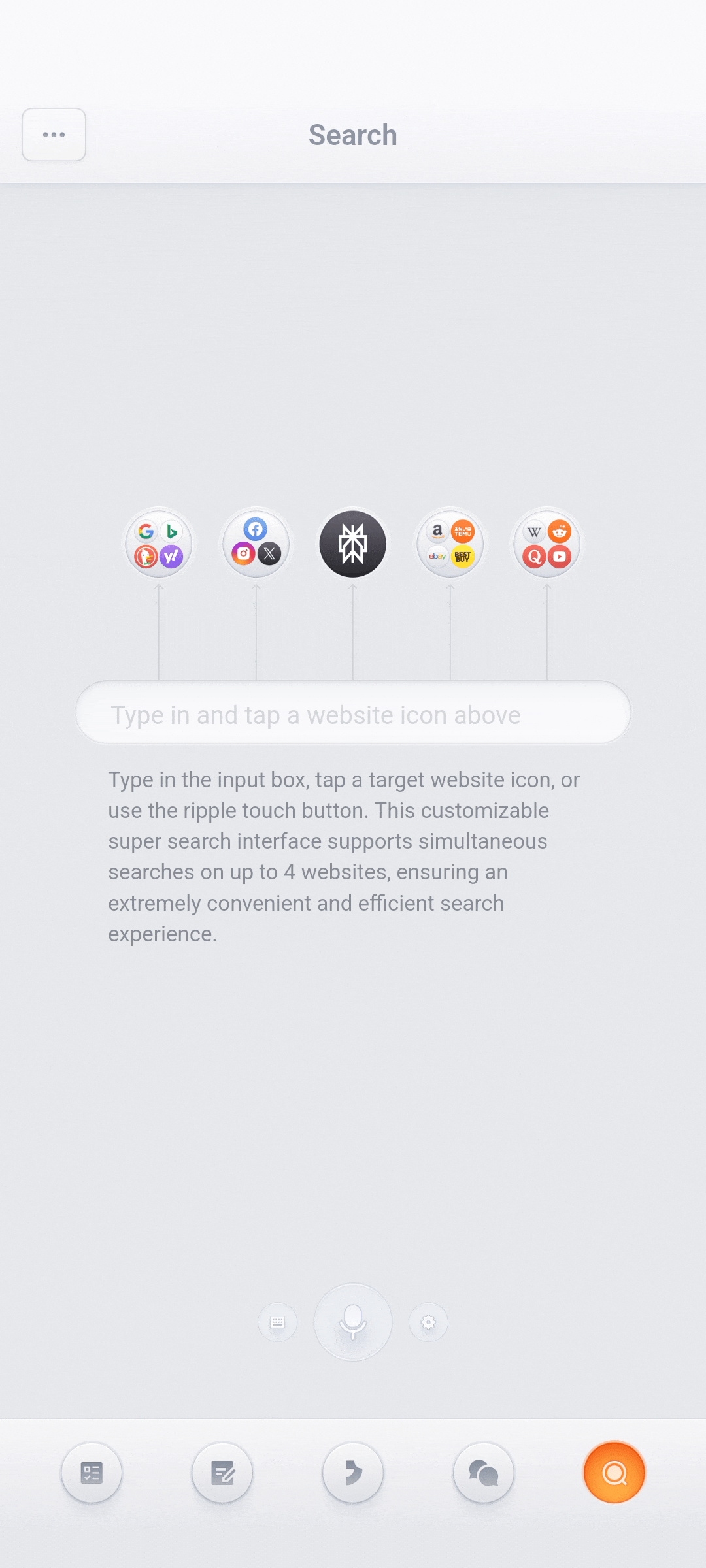
Photo/LeiTech
This "Ripple Touch" design is also used in J1 Assistant's core AI assistant interaction. Under the AI Assistant tab, holding down the voice icon not only displays the voice waveform preview box but also defaults to displaying 5 options – J1 Message, Google, J1 AI Assistant, ChatGPT, and Note:
Swiping to J1 AI Assistant asks the AI integrated into the app a question, swiping to ChatGPT asks ChatGPT a question through the web version, and swiping to Notes records it as a voice note.
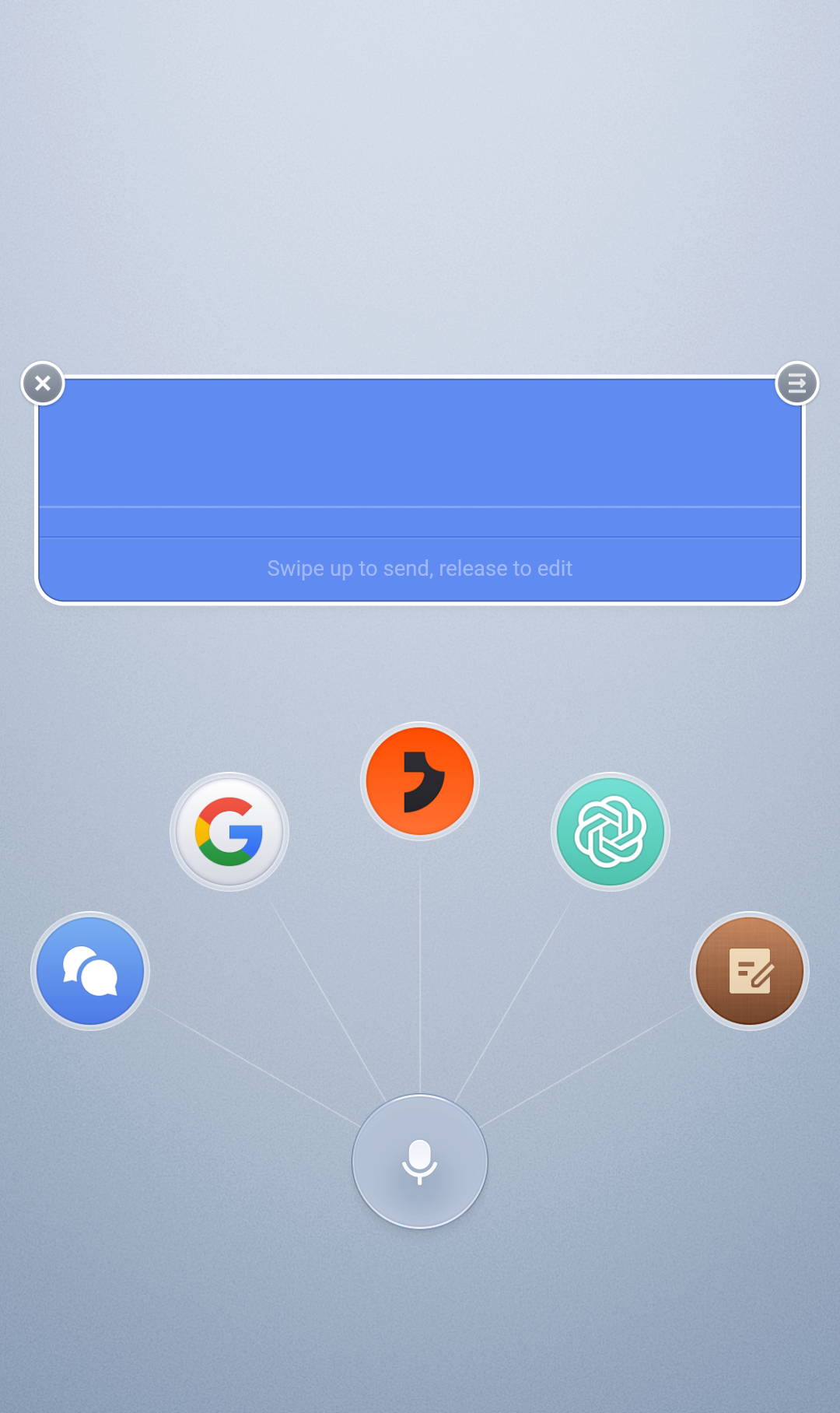
Photo/LeiTech
Overall, J1 Assistant can be roughly understood as: To-do List + Smartisan Notes + AI Chat + Bullet Messenger + Card Dealer. The question is, why did J1 Assistant choose to integrate these functions into one app? And what kind of chemical reaction will they have when put together?
J1 Assistant Wants to 'Squeeze' Every Bit of Value from AI Dialogue?
As AI assistant apps have evolved, various expansions have been made based on "AI chat," including expanding communities, creating "agent lists," and introducing AI characters with different personalities. Returning to J1 Assistant, its approach is to expand around "information," especially dialogues with AI.
In fact, the core of J1 Assistant's product design is also AI chat. Including Jarvis, there are 5 voice options available for the AI Assistant, deliberately avoiding questions about its underlying model. From the responses, in addition to the underlying large model, it directly uses the answers from Perplexity (a well-known overseas AI search engine) when network-related questions arise.
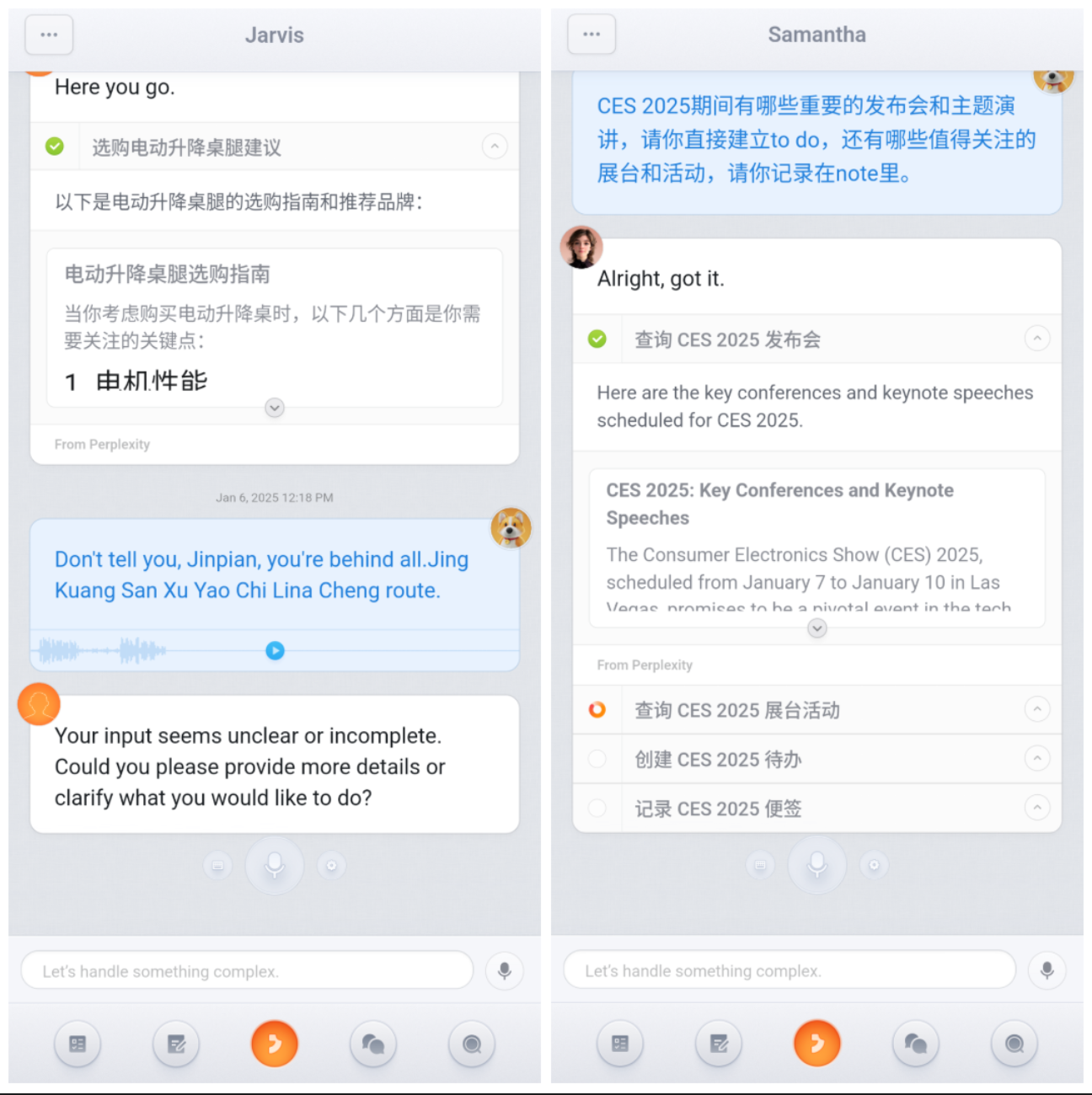
Photo/LeiTech
The interaction highlight mentioned earlier is that the same paragraph can be flexibly selected between five sources. In other words, users can instinctively hold down to speak and then decide whether to ask the AI and which AI to ask, or save it as a note or send it to a friend.
But an even more important feature of J1 Assistant is that it allows the AI to directly write content into notes and create to-do lists. Taking the upcoming CES 2025 Consumer Electronics Show as an example, there will be a plethora of events and new products, which can be overwhelming. At this point, I can tell J1 Assistant:
During CES 2025, please list important launches and keynote speeches directly in my to-do list, and note any noteworthy booths and activities in my notes.
The AI Assistant will search for launches and booth activities during CES 2025 and create corresponding notes and to-do lists based on this information. At this point, the To Do tab will display a list of keynote speeches from Waymo, Volvo, Panasonic, and even NVIDIA, while the Notes tab will contain a "CES 2025" note.
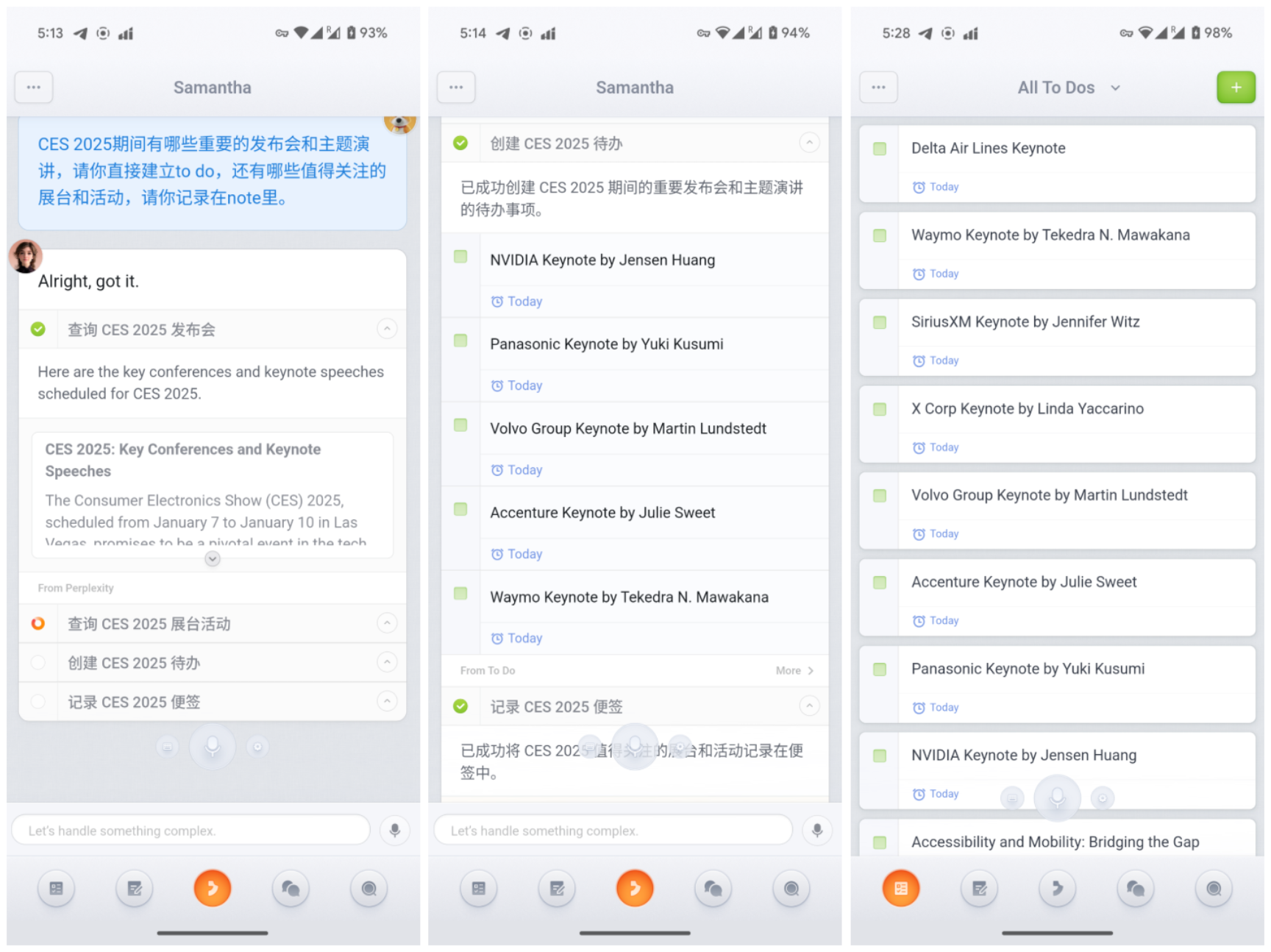
Photo/LeiTech
Although the note content is in English, you can select the entire text and use AI to translate it directly into Chinese, then replace it, resulting in a concise and usable "CES 2025 Key Booth Guide."
Of course, in real-world scenarios, users may not always express their full intentions with each question. More often, they will first inquire about information and then, depending on the situation, save the AI's response as a note or to-do list. J1 Assistant has also been designed accordingly. Long-pressing a response in the AI chat interface and selecting share will bring up three "destinations" for information within the app – J1 Message, To Do, and Notes.
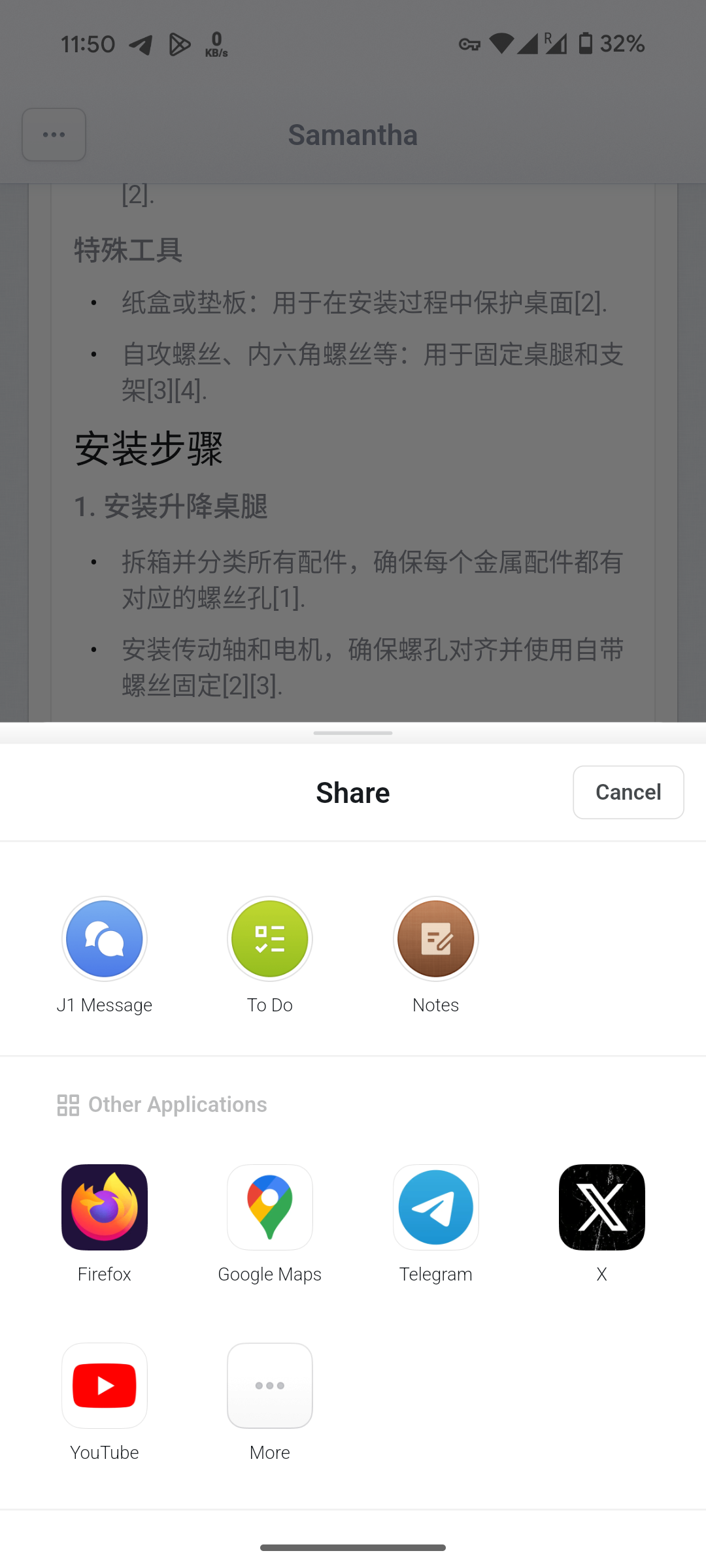
Photo/LeiTech
Sharing to J1 Message is easy to understand, as it sends the information to friends. Sharing to To Do and Notes, on the other hand, obviously aims to ensure that the content of AI dialogues is not just a fleeting glance but continues to leverage the value of "AI answers" for users in the form of to-do lists or notes.
This is also what sets J1 Assistant apart from other AI assistant apps, as it attempts to reuse the value of AI answers in dialogues two or even multiple times. In contrast, although J1 Assistant's Search function is also quite unique, it feels too independent in actual experience and can basically be considered a separate entity, making it somewhat redundant within the entire app.
However, despite the good intentions, J1 Assistant still has many bugs and issues. For example, the completeness of saving different "AI answers" varies, with some Q&A pairs being fully shareable to notes while others only saving the first sentence; the problem becomes even more severe when saving as to-do lists, with most being incomplete.
Of course, this is still a Beta version, and theoretically, this part should not be difficult to fix. The real challenge lies in positioning: do we really need such an app?
In LeiTech's view, although J1 Assistant's foundation is AI, the fulcrum that truly leverages users may still lie in information forms such as "to-do lists" and "notes."
Although I personally have given up on these forms for a long time, many people still use them to process and save information. The key to J1 Assistant's success in attracting users may depend on whether it can attract these "to-do list" and "note" users on the one hand and, on the other hand, whether it can attract heavy users who frequently use AI assistants to answer questions.
The Wind of AI Hardware is Blowing, and Luo Yonghao Wants to Break Through with AI Software
Xiaomi's Lei Jun once made a famous assertion – "When the wind blows, even a pig can fly." Later on Weibo, Lei Jun explained that the original intention of the phrase "pig on the wind" was to go with the flow. After ChatGPT made waves globally at the end of 2022, the trend shifted towards AI. If you were Luo Yonghao, how would you choose?
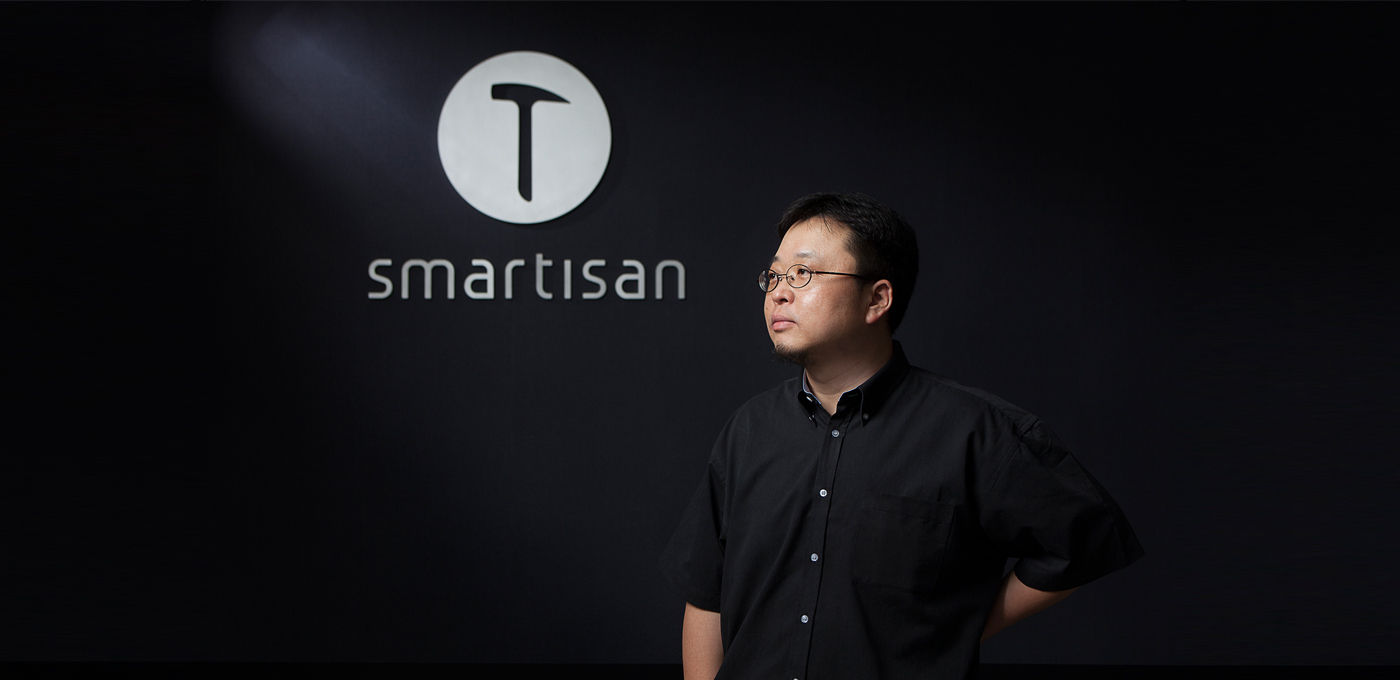
Figure/Smartisan Technology
According to Ifeng News, Lao Luo's Thin Red Line's focus was still on AR glasses at least by 2023, and they even created a first-generation prototype. However, at the same time, he also began to ask the software team to create a demo for an AI application. Soon after, a new consensus was reached internally: "Future software must be based on AI."
Looking back now, J1 Assistant is undoubtedly the new beginning of Lao Luo's "last entrepreneurship." This beginning does have room for imagination, but it will still be quite challenging to stand out among today's multitude of AI applications.
Source: Leikeji

